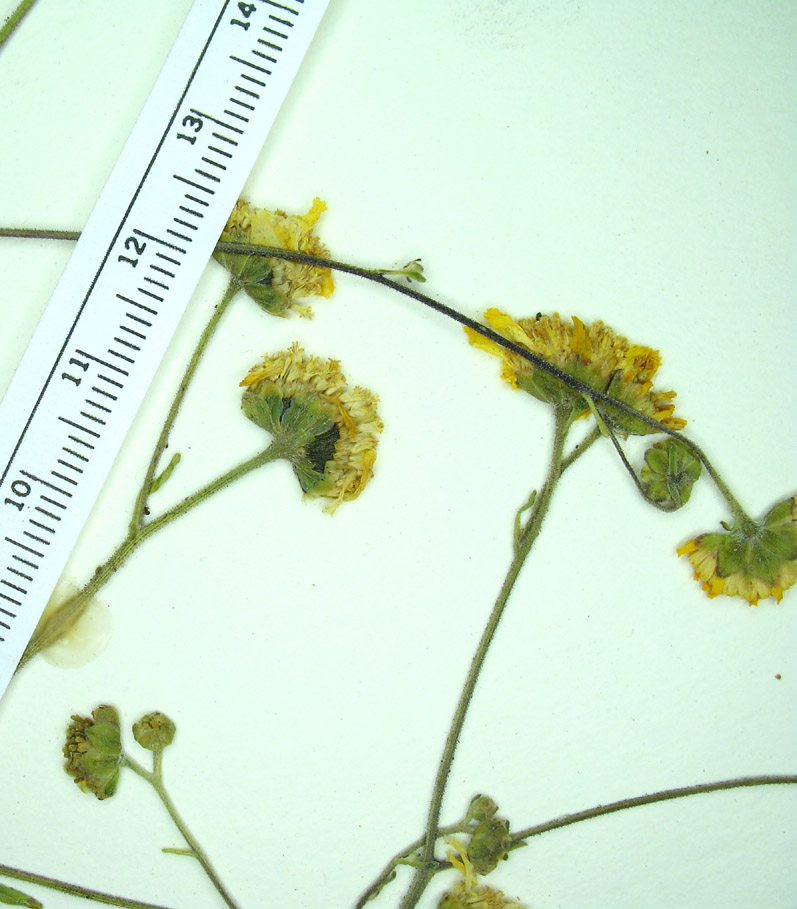Bahia
|
Family: Asteraceae |
Annuals, biennials, or perennials, 10-80+ cm. Stems erect or spreading, branched from bases or throughout. Leaves mostly cauline; all or mostly opposite or all or mostly alternate; petiolate or sessile; blades usually 1-2-ternately lobed (blades or lobes mostly filiform, lanceolate, linar, oblanceolate, oblong, or ovate), ultimate margins toothed or entire, faces sparsely to densely hairy (hairs white, straight, conic or fusiform, 0.1-0.3 or 0.3-0.8 mm), often gland-dotted as well. Heads radiate, borne singly or in loose, corymbiform arrays. Involucres ± hemispheric or broader, 6-14+ mm diam. Phyllaries persistent, 8-18+ in ± 2 series (reflexed in fruit, distinct, subequal or outer smaller, mostly lanceolate or oblanceolate, thin-herbaceous, margins membranous, rarely purplish). Receptacles convex, smooth or knobby, epaleate. Ray florets 5-15, pistillate, fertile; corollas yellow (sometimes pale). Disc florets 25-120+, bisexual, fertile; corollas yellow (hairy), tubes shorter than or about equaling cylindric or campanulate to funnelform throats, lobes 5, deltate to lance-ovate. Cypselae obpyramidal, 4-angled, ± hirtellous to ± sericeous; pappi persistent, of 6-12 distinct, spatulate or oblanceolate to ovate or quadrate, basally and/or medially thickened, distally and/or laterally scarious scales in ± 1 series (apices usually muticous, sometimes some or all ± aristate). x = 12. Bahia dissecta is treated here in Amauriopsis; B. oppositifolia and B. woodhousei are treated in Picradeniopsis; B. nudicaulis is treated in Platyschkuhria. These departures from the treatment of Bahia in a broad sense by W. L. Ellison (1964) are consistent with findings by B. G. Baldwin et al. (2002).
|

